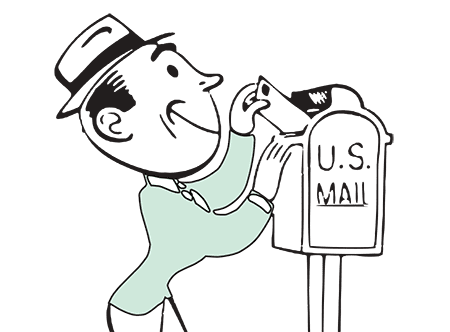From Bishops Mark to Forever Stamps: Unraveling the Historical Journey of Postage Stamps
Rarely do postage stamps and oxygen cross your mind as comparable entities. Yet, their significance becomes strikingly evident when we run out of them. Understanding how these seemingly insignificant items, like postage stamps, impact our lives involves delving into their intriguing history and evolution.
The Emergence of the Postage Stamp
Before the advent of postage stamps, mail was customarily hand-stamped or inked:
- In 1661, Henry Bishop made his mark with the invention of postmarks, which the London General Post Office used and are known as Bishop’s Marks.
- By the mid-1800s, mail often consisted of a simple folded sheet of paper, with the address on the outside and the message within. Envelopes were a rare sight.
- The postal rates were exorbitant, leading people to resort to codes and tricks to evade delivery charges, typically paid by the recipient.
When did the United States issue its first postage stamp?
The first adhesive postage stamp in the United States was issued by a private New York City mail service, Alexander M. Greig’s City Dispatch Post, on February 1, 1842. However, the first government-issued U.S. postage stamps weren’t sold until five years later, on July 1, 1847, in New York City. They were represented by two denominations: five cents featuring Benjamin Franklin and ten cents featuring George Washington.
The Revolution of Postage Stamps
The story of Rowland Hill brings a fascinating twist to this historical journey. A schoolteacher from England, Hill created the first adhesive postage stamp in 1837. Prepaying postage became practical and straightforward, earning him the title of Sir Rowland Hill. He served as the Post Master General and designed the inaugural government-issued stamp: the British penny black stamp, unveiled in England on May 6, 1840. His revolutionary ideas of pre-paid postage and uniform postal rates based on weight were quickly adopted worldwide, increasing the use of the postal service significantly.
The Evolution of Postage Rates
The U.S. postal rates have seen a remarkable evolution. Starting from three cents per half ounce in March 1863, the rates surprisingly decreased to two cents per half ounce in October 1883. This trend continued until July 1885, when the cost to mail a letter became two cents per ounce, effectively doubling the volume of mail you could send for the same price. The rates and types of stamps have continued to change over the years.
Key Takeaways
- Revolutionary reforms, such as prepaid postage and weight-based postal rates, led to an increase in the use of envelopes and stamps.
- Sir Rowland Hill was not the only contributor to the Hill family; his brother Edwin Hill invented an envelope-folding machine to meet the growing demand.
- The U.S. released its first perforated stamps in 1857, three years after their introduction in England.
- Today, postage stamps have evolved into collector’s items and come in various colors, shapes, sizes, and denominations.
In Conclusion
From the first government-issued stamps featuring the heads of states to the modern-day Forever stamps, postage stamps have come a long way. No matter your mailing needs, Letter Jacket Envelopes can provide an envelope to fit your requirements. Thanks to Letter Jacket’s intuitive ordering system, our envelopes come in various sizes, shapes, and colors and can feature custom artwork.



